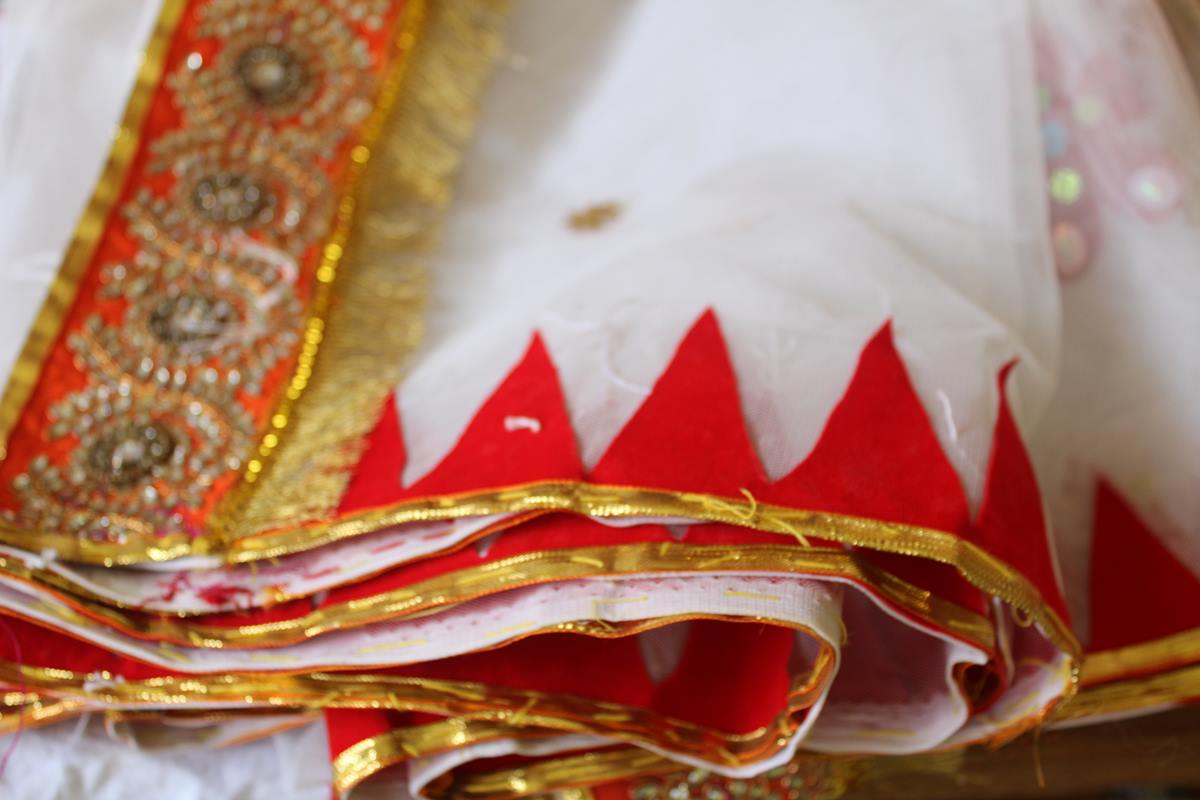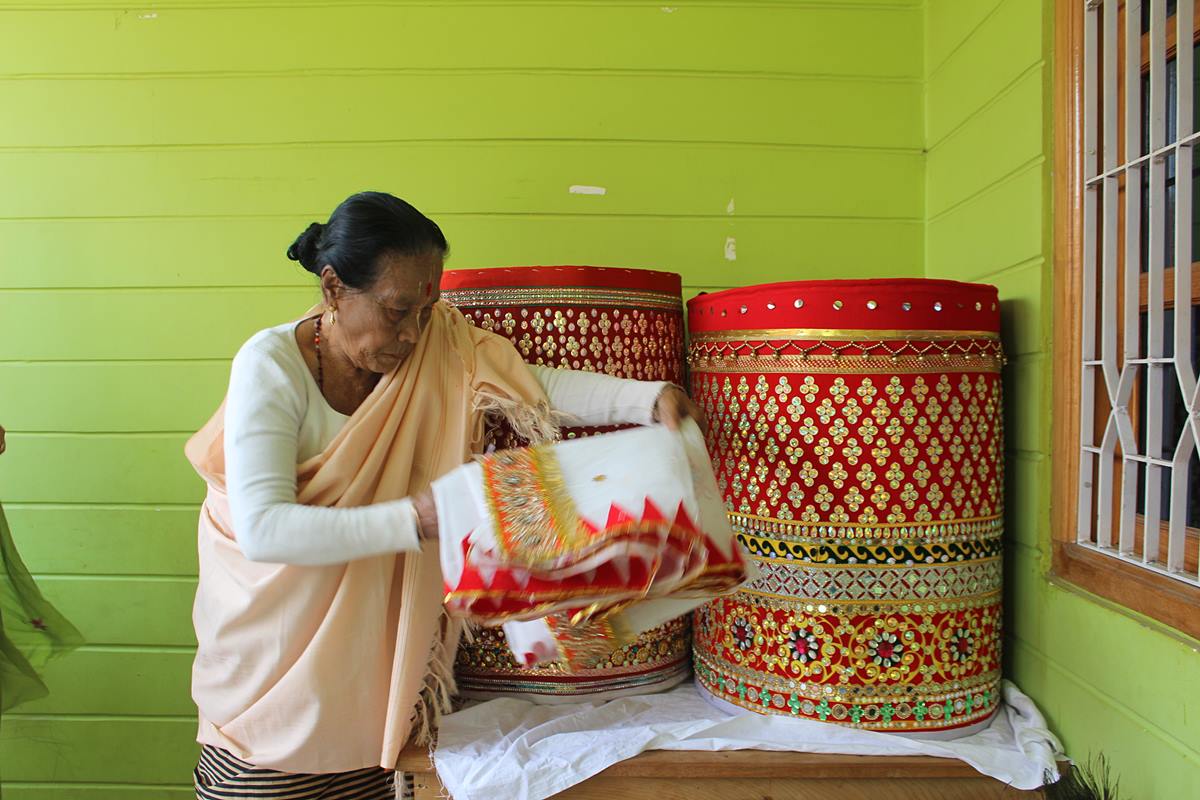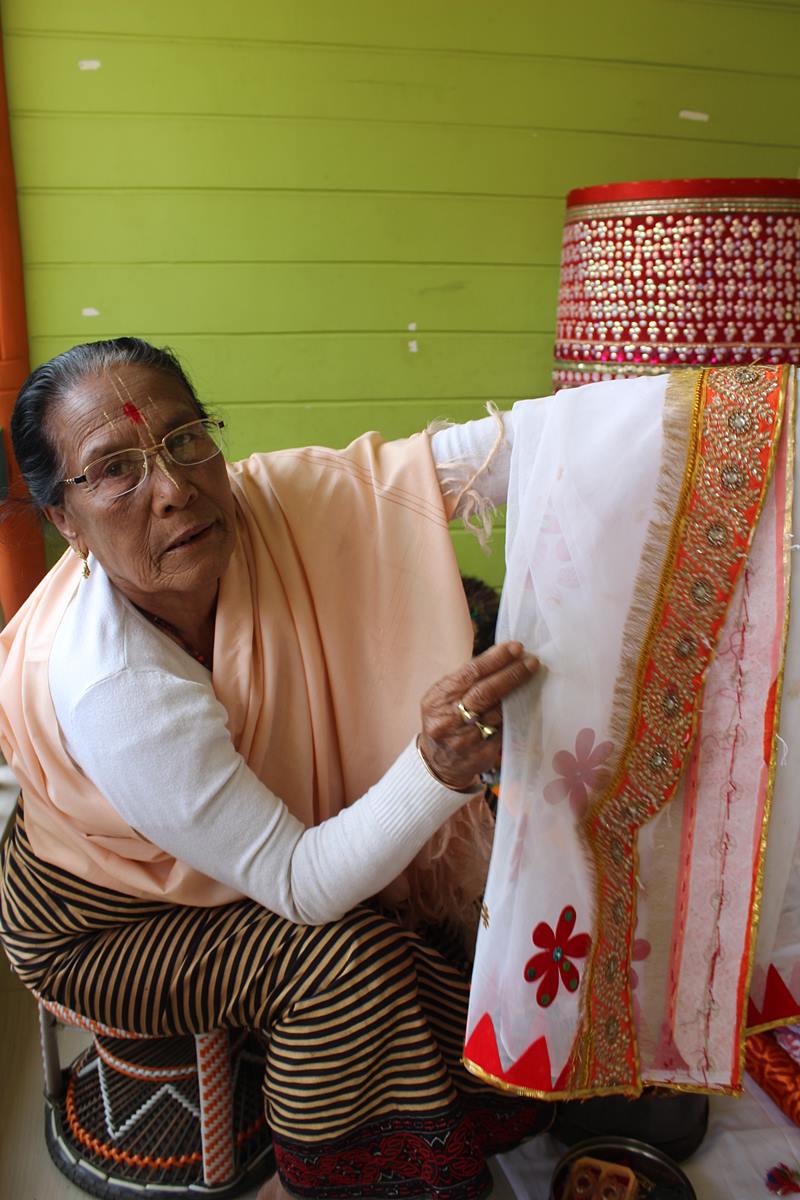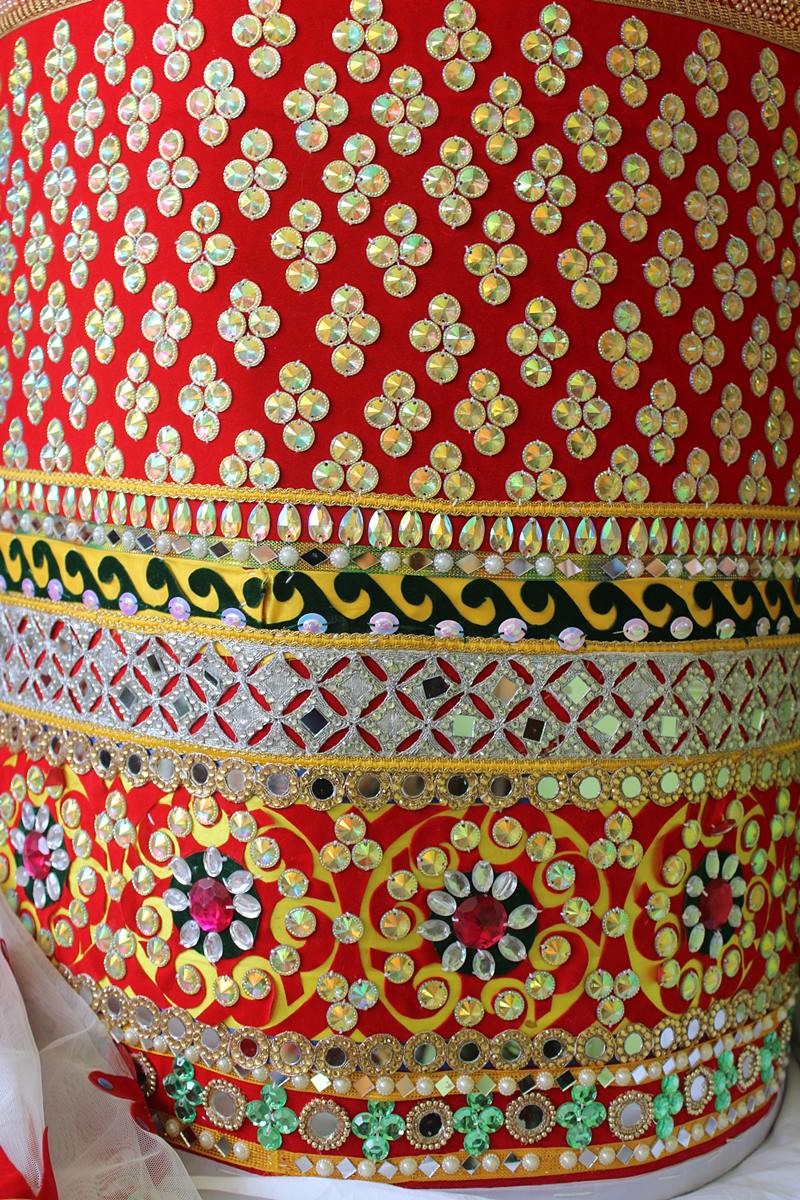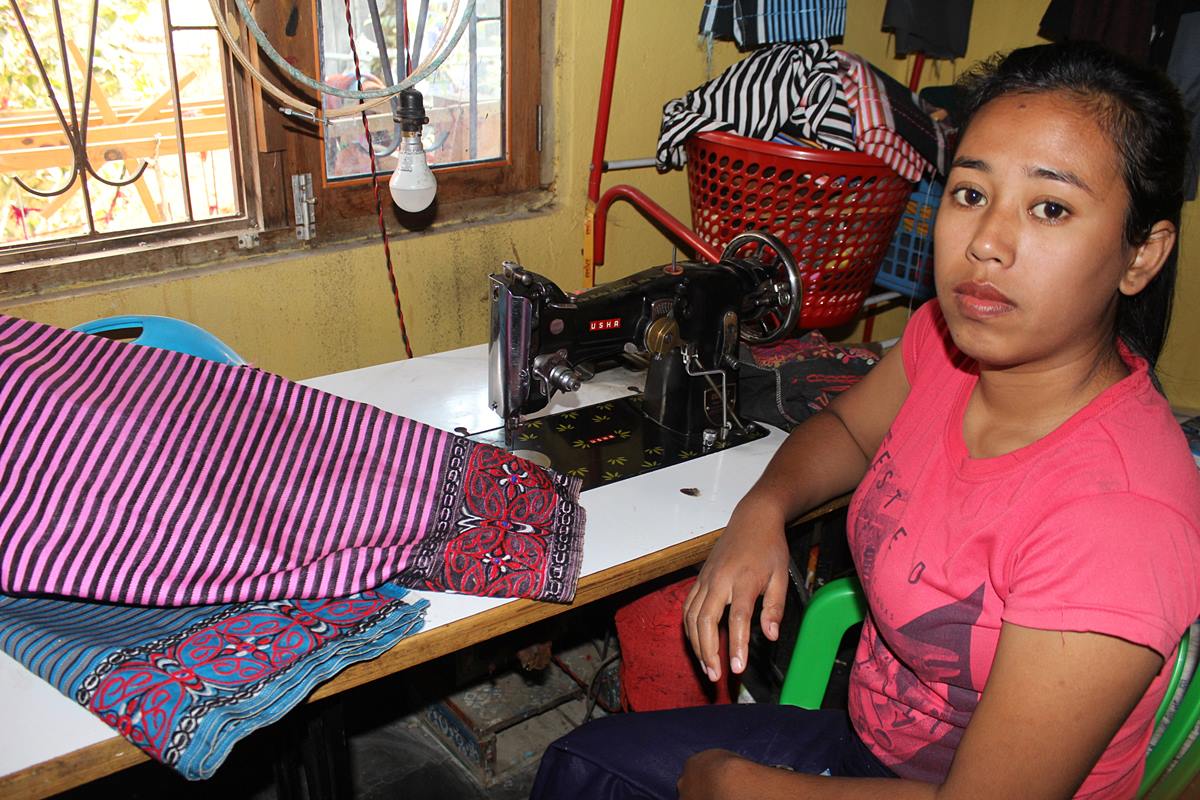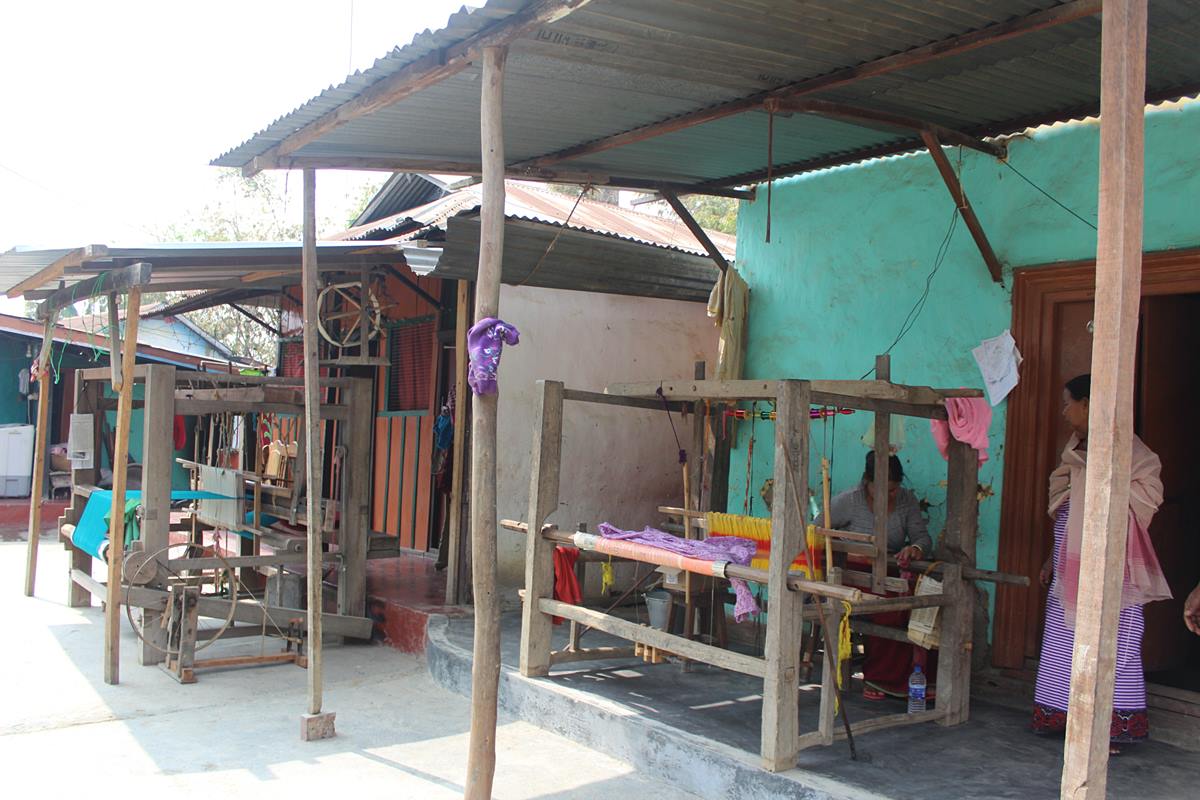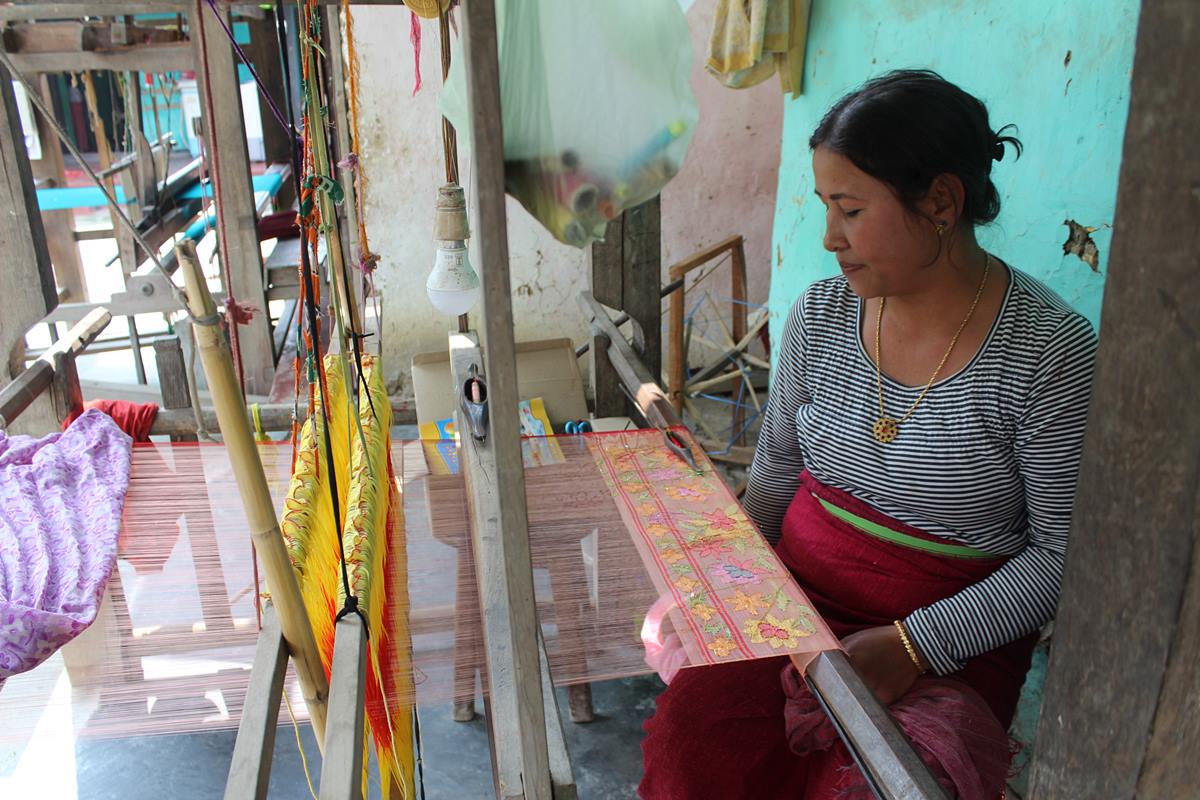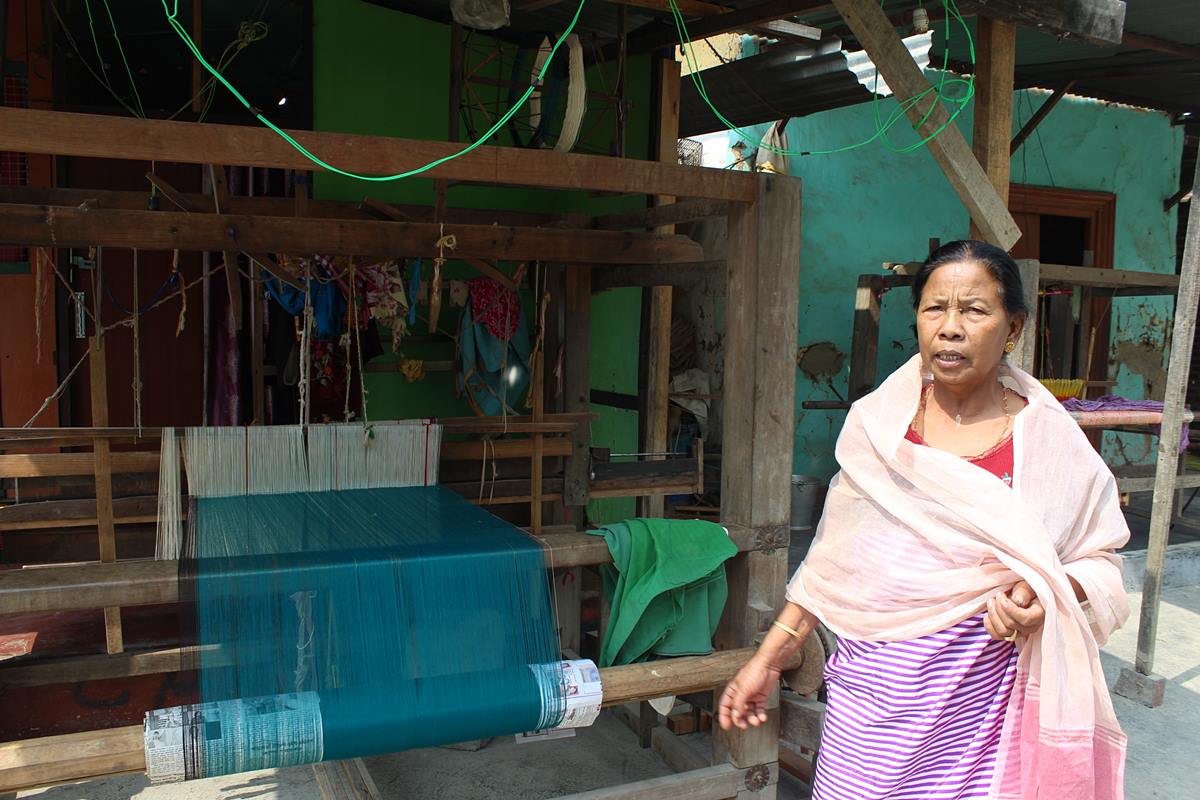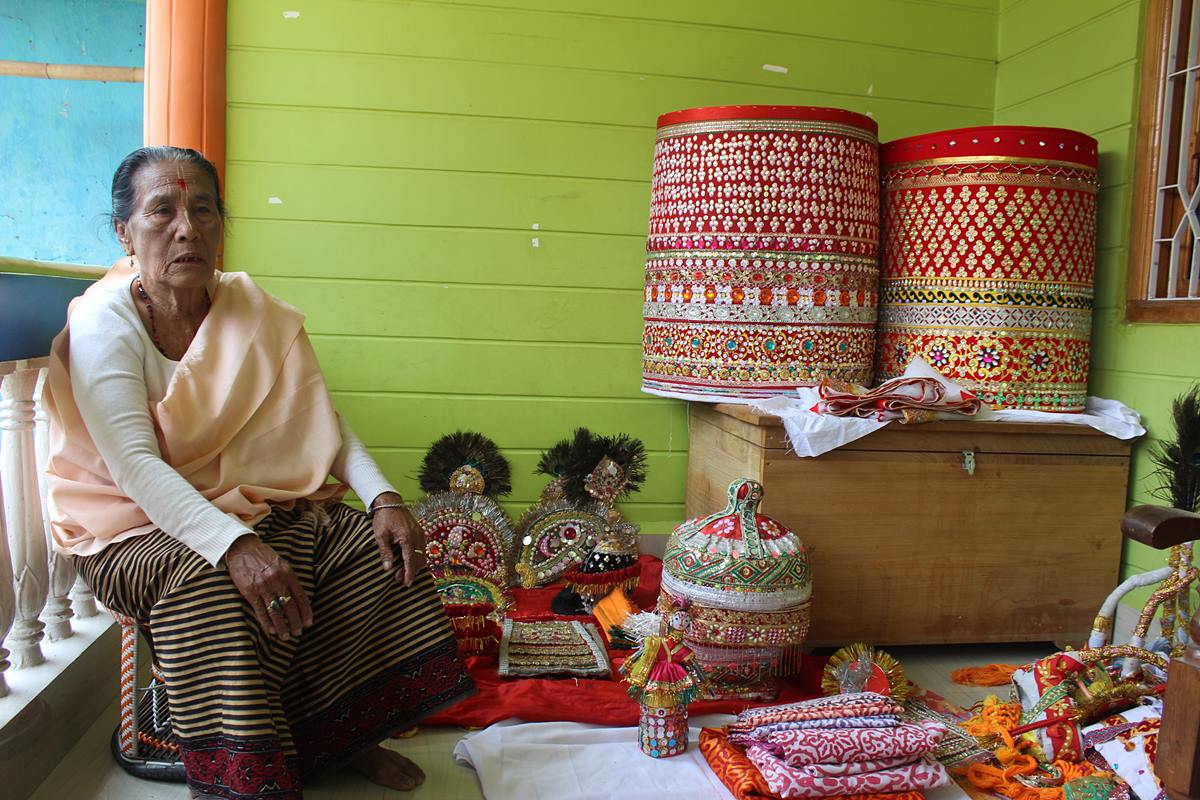
"When we were small children, we all played dress-up and everybody had a good time. So why stop?"
- Iris Apfel
In Wangjing Sorokhaibam Leikai, a municipal town in Thoubal district of Manipur, she’s quite the household name. She is famously known as Potloi Sabi (bridal wear designer) but for most of us she will always be Abok (meaning grandmother, in Meitei language in Manipur). She is the recipient of the prestigious Padma Shri Award, 2021. Hanjabam Radhe Sharmi or Abok Radhe, the Potloi designer, is 88-years-old and she’s just getting started. For her, age is just a number and with receiving the long due recognition recently for her tireless efforts in designing and stitching, it looks like she has taken a new leash in her life. She could probably be the oldest living Potloi designer. Potloi is a traditional bridal wear of the Meiteis’ in Manipur. Abok has been at it since she was little, and this award is the recognition of her six decades of tirelessly weaving magical dreams for the newlywed brides.
For Abok, who got married at 15, life as she calls it is a teacher. She took to making Potloi as a means to keep herself occupied and later found Thounaojam Priyosakhi, a woman in the neighbourhood whom she called Eche or elder sister. After learning the craft, she had a better means to support her family as her astrologer husband had an erratic income. But what made it different was her passion for the craft. She never looked at it as a chore but as something she loved. For those who know her will tell you that it was a labour of love in every thread.
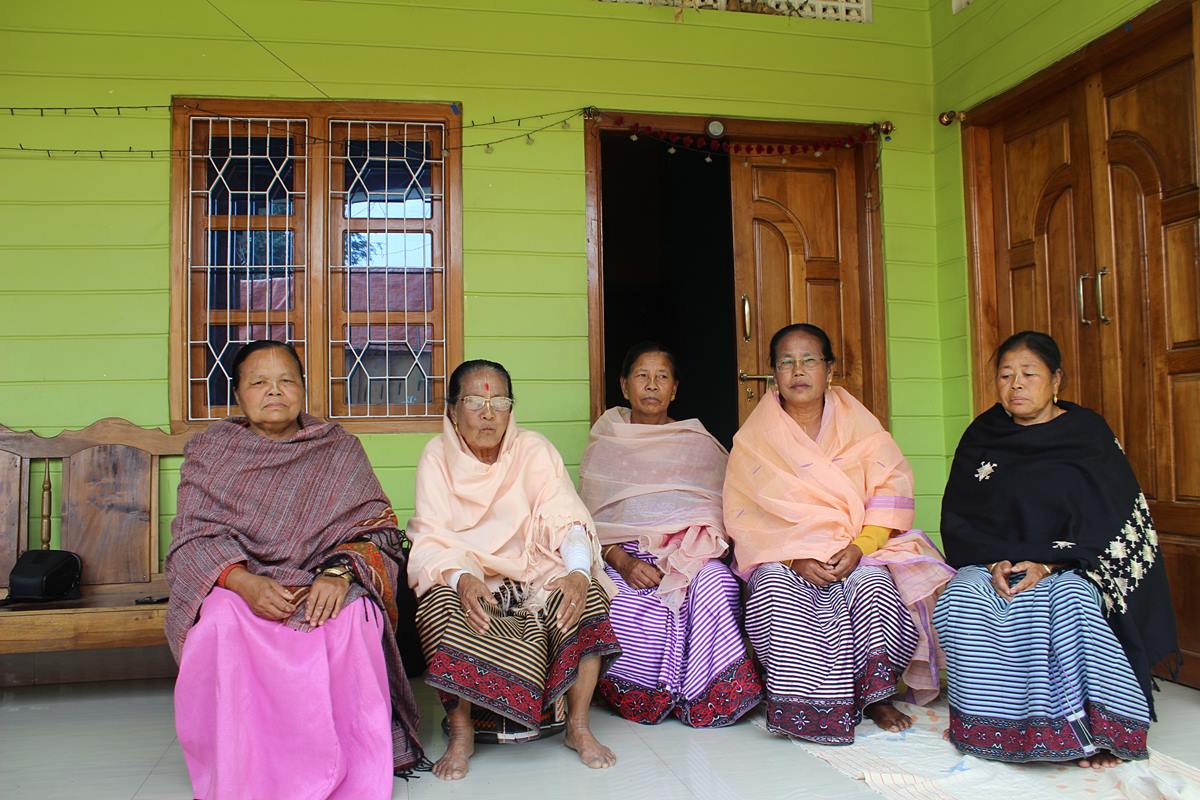
Potloi and its lore
Potloi – a bridal dress among the Meitei community in Manipur is a tradition that dates back since the times of the Meitei Maharajahs in the then erstwhile Meitei Kingdom. It is believed to be introduced by Maharaja Bhaigyachandra (1769-1798). Potloi is also used in Manipur’s classical dance presentation “Ras-Leela”.
According to Abok Radhe she still maintained the art in its purest form as she said, “I did not make any changes or added on to it”. It takes at least a week to complete the Bridal set that comprise of Kokgee Leiteng (head wear); Leisom Phurit (blouse) and the Potloi (a cylindrical skirt that is in bright red), Khonggoi (belt to tie the Potloi in the waist) and Jaliphee (a white color light stroll like veil that is drape down from the back of the head to the back).
Then the complete set is adorned with motifs and added on with jewellery. Kokgee Leiteng – is worn on the head by the bride embellished with glittering jewellery along with Leisom Phurit – a half sleeves green color velvet blouse.
The main attire Potloi – is a cylindrical stiff skirt worn at the waist. It is bright red and is tied on the waist with a Khongoi (belt). The Jaliphee drape over the upper body loosely falls from the bride’s hair bun at the back towards her chest. It is a transparent white with designs on the border.
The Potloi is not just a mere piece of dress, the motifs are of delicate handiwork. “The potloi is entirely done with my hand” explained Abok Radhe. It took a week to complete the Potloi and take at least three hours to dress up a bride, explained Radhe. As a designer it is also mandatory for her to dress the bride- as it involves another whole process- and is not an easy task to do so.
Taking it one thread at a time
The art of Potloi is passed on from generation to generation. Hence, it is a culture in itself, a tradition. There’s no classroom training for it and the skills required are passed on from a sister, a mother, or a neighbourhood aunt.
For Radhe it was her Eche Priyosakhi Thounaojam, a neighborhood aunt. As a young mother Abok Radhe would lend a hand in making the Potloi to Priyosakhi. Over the years she mastered the art.
Just as Manipur is a highly community-oriented society, creating a Potloi is also a collective effort. Though there is a main designer or the Potloi Sabi, it is by no means done by one person. Presently there are around three to four women in her locality who work with Abok. As they work with her, they learn the skills of the craft and the trade secrets to be perhaps the designer in the future. According to Abok Radhe this is also how the art will be passed on. Apart from Potloi, Abok also makes traditional dolls and attire for religious purposes.
Weaving and crafting are traditions set in the history of Manipur particularly for the women folk where they weave together and talk about their families and activities along with the intense discussion on designing itself. The neighbourhood girls grew up with the sound of looms in the houses, including Radhe, who grew up weaving. Moreover dolls are popular girls play with toys, thus most girls craft their own dolls, out of pieces of cloth or straws. At Radhe’s locality every household owns a loom- either the traditional weaving loom called – Khuang Kon or the Shuttle Loom. Some of the popular traditional clothes weave includes– a Raniphee, Wangkheiphee, Phanek and many other designs and traditional wear.
Radhe’s next door neighbour, 65-years-old Nganbi says that most people would come and collect their products and sell them across the state. Nganbi weaves on her loom all the while she also lends a hand in making Potloi with Abok Radhe. Meanwhile her daughter makes designs like the Mayek (design) on the woven Phanek (women’s wear) with her sewing machine. After the final design is done they take the finished products and supply it to the outlet in towns and cities – which are also managed and run by women. Home delivery is also common, where women bring products to the homes of other women – a customer. Orders are also placed through word of mouth.
Abok Radhe would herself go to the market to purchase all the required materials, cloths, glitters, mirror, metallic pieces, stones and studs, as a true artist does. She would then dip the fabric (cotton cloth) in starch and dry it in the sun. It takes at least a day or two, mostly depending on the weather.
Once the cloth is dried and stiff, the designing and preparation begins. The seven layered cloth is rolled into a cylindrical shape. The intricate motifs are created by using “needle and thread” with the hand. The motifs from bottom up to the waist comprise of Khongdon; Pasot, Lairen Makhoi, The Yang, Mingsen kon, Khoi, Thabi maru Mingsen, Pita, Pakhangba Mayek.
Potloi is not sold as a dress item or a wedding dress in the market or a showroom. Brides-to-be will have to place an order to the Potloi Sabis (bridal dress maker or designers). “They would come to me and we will discuss and make the Potloi according to their size and other intricate details. I never sell Potloi in the shop or open a Potloi shop. Of course I do keep some parts of it ready for order at home” says Abok.
The Handloom Collective
On an average a Potloi would cost twenty five to thirty thousand Indian rupees. The popular women wear- Wangkheiphee cost between ten to fifteen thousand, depending on designs and the handiwork. It takes a week to complete the Phee – a kind of half saree or a stole in various colors, sizes and designs. Daily women’s wear, the traditional Phanek – a sarong wrap around the waist, comes in all colours – except black and white. It comes in various fabrics, cotton, wool and silk. Meitei Phanek cost between thirteen to fifteen thousand rupees.
According to Nganbi, locally produced Muga silk yarn, locally known as Muka lang or cotton yarn that were used in early years has slowly withered. Most yarn and raw materials today are imported from different cities across the country.
Handloom and textiles are a primary and secondary occupation for a large section of households in Manipur. It is the largest cottage industry here and the second highest employer in the state, next to agriculture.
Manipur is the second-largest handloom producer in India, Assam being the first. According to the All India Handloom Census 2019-2020, Ministry of Textile, Government of India, Manipur ranks third with 2.1 lakh weaver households – a third of who are in the cooperative fold - among the four states that account for 18 lakh weaver households in India. The other states are Assam with 10.9 lakh, West Bengal with 3.4 lakh, and Tamil Nadu with 1.7 lakh households.
